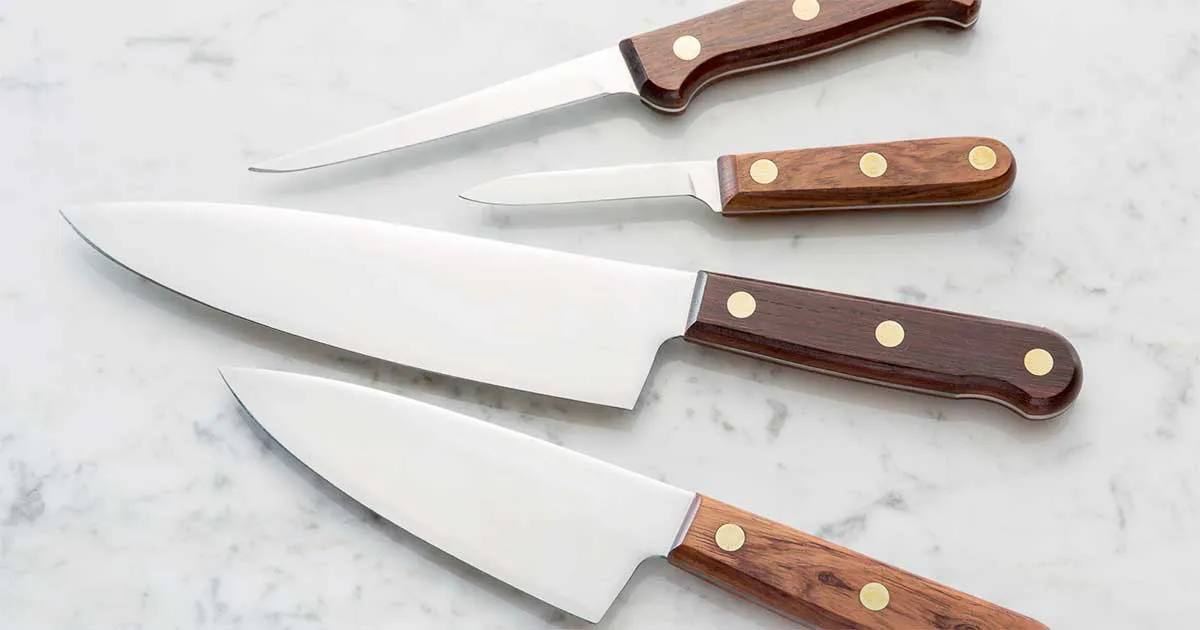A good-quality knife serves as a cornerstone in a professional chef’s culinary gear. Like a seasoned artist reaching for their trusted paintbrush, a chef relies heavily on their knife to execute precise cuts, making the preparation process smooth and satisfactory. The blade’s sharpness, balance, durability, and maintenance requirements are paramount attributes chefs consider. An excellent knife can significantly enhance a chef’s mastery and performance, as it affects how efficiently and effortlessly they achieve their culinary creations.Â
Among the wide range of materials used in manufacturing chef knives, stainless steel holds a prominent place. This metal’s suitability for professional chef knives lies in its distinct characteristics such as durability, sharpness, rust-resistance, and easy maintenance. With a varied price range, stainless steel knives provide chefs at all levels with an option that fits into their budget without compromising on quality. This article discusses the importance, production process, maintenance, and selection of stainless steel chef knives.
Table of Contents
History of Chef Knives
The story of chef knives is as old as civilization itself. Their initial appearance dates back to the Stone Age when the first knives were made from rock flakes. As humans progressed, so did their tools. Thus, metals soon found their way into knife-making, starting with bronze and iron. For a long time, knives were made with high carbon steel, sharp but prone to rusting, leading to a consistent need for maintenance.
The introduction of stainless steel into knife making occurred in the early 20th century and marked a significant change in the industry. The development of stainless steel knifes provided a long-awaited solution to issues that had plagued chefs for years. Stainless steel’s resistance to rust, ability to maintain a sharp edge, and convenient maintenance made it the preferred choice for many professional chefs. With various types of stainless steel available today, each with its own makeup and properties, this versatile material continues to be a staple in the world of chef knives.
The Composition of Stainless Steel
Stainless steel, befitting its name, is a group of iron-based alloys known for their ‘stainless’ or corrosion-resistant properties. The key to these properties lies in its unique composition, which sets it apart from other types of steel. Distinguished by its sleek, shiny aesthetics, stainless steel exhibits a harmony of strength, versatility, and resistance to corrosion, setting it apart from other materials and making it a favored choice not only in cutlery but also in various sectors like construction, automotive, and healthcare.
The anti-corrosive characteristic can be attributed to a minimum of 10.5% chromium present in its composition. When exposed to oxygen, chromium reacts to form a thin passive layer of chromium oxide on the surface of the steel, providing a shield against any form of corrosion. Additions of nickel, manganese, and nitrogen can also improve the steel’s structure and strength. Carbon, in controlled quantities, is also present and contributes to the durability and sharpness of the knife, as it hardens the blade. However, excessive carbon can lead to a decrease in rust resistance. Some high-end stainless steel types also have additional elements such as molybdenum and vanadium, which boost the blade’s strength and edge retention.
Why Use Stainless Steel for Professional Chef Knives?
The use of stainless steel in professional chef knives is largely due to its unique properties. First and foremost, stainless steel is resistant to rust and staining, an important aspect considering that a chef’s knife is frequently exposed to moisture and acidic food substances. Furthermore, a well-made stainless steel knife complements a chef’s precision with its satisfactory blade sharpness and exceptional edge retention. In addition to the impressive durability, the ease of maintenance also gives stainless steel chef knives an upper hand. These knives only require basic cleaning and occasional sharpening to maintain their optimal performance.
When compared to knives made from other materials, stainless steel chef knives offer a balance that many lack. For instance, while high carbon steel knives have excellent edge retention and sharpness, they fall short in rust resistance and may demand more attention in maintenance. On the other hand, ceramic knives, famous for being incredibly sharp, are also brittle, risking easy chipping or breaking. Therefore, stainless steel presents itself as the robust all-rounder with a balance of sharpness, sturdiness, rust resistance, and easy maintenance, making it the preferred choice for many professional chefs.
Types of Stainless Steel Used in Chef Knives
The umbrella term stainless steel encompasses various types, each with its unique composition and characteristics. In the culinary world, the three most commonly used types are 440 stainless steel, VG-10 stainless steel, and high carbon stainless steel. The 440 series, particularly 440C, is known for its excellent hardness and rust resistance. VG-10 stainless steel, originating from Japan, boasts superior hardness, corrosion resistance, and edge retention, making it favored for high-quality knives. High carbon stainless steel is a hybrid of stainless and high carbon steel, offering a balance between corrosion resistance and edge sharpness.
The quality of the final product, such as the stainless steel chef knife, is influenced by various factors. The type and grade of stainless steel used, as well as the precision in each stage of the production process, significantly affect the knife’s performance. How the steel is heat-treated is particularly important as it directly impacts the knife’s hardness, sharpness, and durability.Â
Stainless steel chef knives are an essential component of a professional chef’s toolbox, offering unique properties like durability, sharpness, and rust resistance. The variety of stainless steel types and the plethora of esteemed brands offer multiple options to match individual preferences and requirements. Aspiring and skilled chefs, equipped with knowledge about stainless steel’s composition, production, maintenance, and selecting a suitable knife, can make an informed decision ensuring their stainless steel knife remains a reliable culinary partner for years to come.
